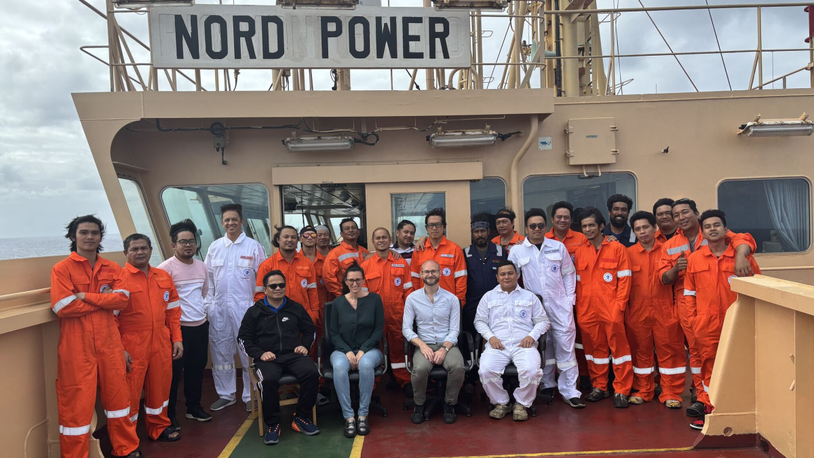Business Sectors
Events
Contents
Counterfeit parts pose increasing threat
Despite seizures and successful legal actions, the risk of serious technological problems caused by fake parts is increasing
In what are undeniably hard times for the international shipping industry, the desire to save money wherever possible is understandable and, in most cases, laudable.
Where financial prudence can become its opposite, though, is in the question of spares. Here, the quest for a bargain can all too easily lead to disaster.
Counterfeit spare parts are a widespread threat across shipping. In April this year, MAN Diesel & Turbo’s Primeserv issued a customer information statement signed by its senior vice president Augsburg Stefan Eefting and senior manager for technical service Dr Ingo Henne. It stated that the number of serious breakdowns due to component malfunction caused by counterfeit parts is increasing.
MAN said: “Because counterfeit parts are often produced with a focus on maximising profit, the counterfeiter omits inspections that ensure the necessary quality for safe operation of MAN Diesel & Turbo engines.”
MAN explained the types of problem caused by the use of counterfeit spares across a range of component types. Counterfeit fuel injectors, for instance, lead to reduced efficiency caused by poor combustion, increased deposits like coke and layers, higher fuel consumption and higher levels of harmful emissions. This can lead to piston seizures with the potential for huge damage.
In the case of a counterfeit valve, malfunction could result in failure and damage to the piston crown and cylinder head. In fact, if one valve cone breaks and drops down into the combustion chamber, it will most likely hammer through the piston crown, damaging the cylinder head including other valve cones, injection valve and cylinder liner. In addition to this, metal parts from the damaged valve cones will pass through the exhaust duct to the turbocharger and lead to a total loss of the turbocharger rotor.
In such a case, the repair cost would amount to hundreds of thousands of dollars just for replacement parts. The commercial loss due to downtime would only add to the bill.
Some of the most commonly counterfeited parts are bearings. Here, counterfeit bearings are more likely to fail as they do not correspond to OEM specifications. This can cause higher wear and tear of the crankshaft journals and pins. In fact, a bearing seizure can result in the total loss of a crankshaft.
To give some idea of the scale of the problem, in February bearing manufacturer SKF announced that it had completed legal proceedings against a dealer of counterfeit bearings in Greece. The proceeedings were initiated in 2009 and concerned a total of 15 tonnes of counterfeit SKF bearings seized as part of a raid at the dealer’s warehouse in the area of Piraeus.
The bearings have now officially been declared counterfeit by the Greek courts system, resulting in their destruction.The raid in 2009 resulted in the seizure of 17,000 pieces of counterfeit rolling bearings, with a market value of over US$1.2 million. These were destroyed at a Greek metal recycling facility: crushed in a scrap press, they will never resurface on the market.
SKF Hellas managing director Rania Patsiopoulos said of the case: “We are very happy that this case is officially closed and has resulted in a positive outcome for SKF and our customers. We will continue to fight the problem of counterfeit products and importers in Greece. This is vital for us in order to protect our customers and their business as well as the reputation of the SKF brand.”
SKF suggests that, rather than being compliant in this trade, most end users are unaware that they are using counterfeit parts. SKF Group director for brand protection Tina Åström explained: “Counterfeit industrial products like bearings are not bought intentionally by customers, so the best way to fight counterfeiting is to raise awareness. Customers who accidentally purchase counterfeit products are being cheated financially, and risk damage to their machinery and expensive downtime.”
There is little doubt that many are unwittingly buying counterfeit spares – or having them installed by unscrupulous repair yards. But the often huge variance in price between a genuine and a counterfeit part suggests that it is almost impossible that some end users would not realise that they are using counterfeit parts.
The motivation behind this is fairly clear. Some businesses would much rather save money and replace a part several times rather than meet the cost of an authentic part. This may be a calculated decision on their part, but it is a potentially very risky one. Consequences can be as severe as loss of the engine, or even life threatening.
On a more practical level, any warranty, liability or obligation regarding engine safety, performance and operation will be rendered null and void if any unauthorised components are used in the engine. In addition, MAN stated that “the use of unauthorised components and spare parts is in many cases a violation of the requirements according to Marpol Annex VI and the NOx Technical Code of IMO."
To give some idea of the potential cost and damage caused by the failure of a rolling bearing, SKF quoted an anonymous customer:“We spent €100,000 on large bearings purchased from an unauthorised supplier. We needed the bearings urgently and the supplier matched our required lead time. The failure took place after only a few months, while the expected service life was several years. We faced costly downtime and broken promises to our customers. All this could have been avoided by more awareness and caution in our sourcing. We will not allow this to happen again.”
OEMs urges their customers to source spares exclusively through authorised distributors. OEMs offer technology that can help in this regard. SKF’s Authenticate smartphone app is designed to help identify spare parts, while in 2015, Wärtsilä introduced digital identification technology that helps to improve component traceability.
The digital identification solution involves marking each critical part selected for tracing with a unique item identifier that includes a data matrix code that can be read digitally. The codes are registered by the Wärtsilä ERP system when the parts are delivered, and then linked to the correct engines during the manufacturing process.
Related to this Story
Events
Maritime Environmental Protection Webinar Week
Cyber & Vessel Security Webinar Week
The illusion of safety: what we're getting wrong about crews, tech, and fatigue
Responsible Ship Recycling Forum 2025
© 2024 Riviera Maritime Media Ltd.












